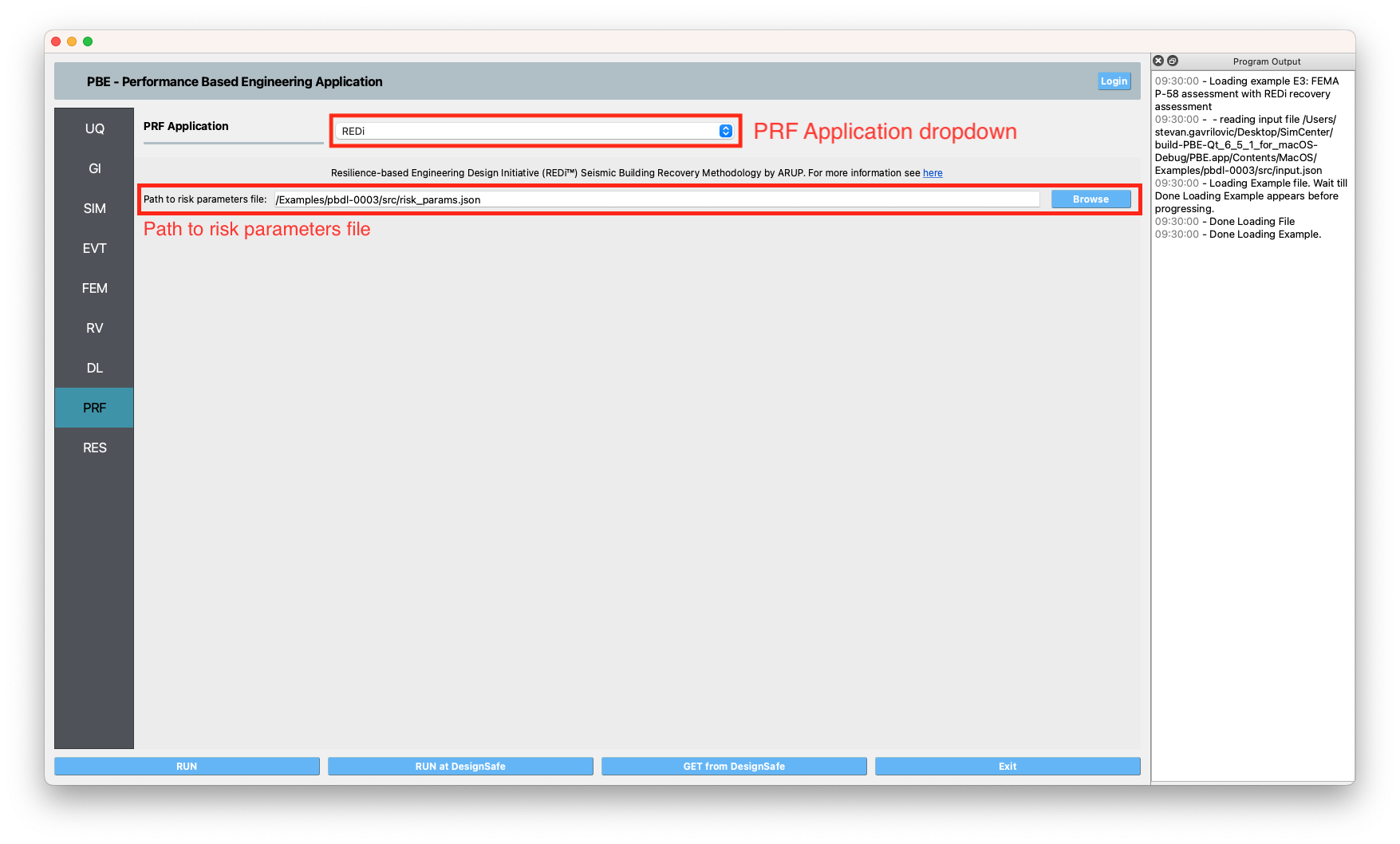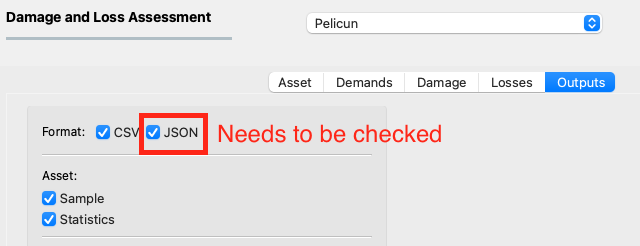2.8. PRF: Recovery Performance Assessment
The recovery performance assessment panel defines the inputs to set up a recovery performance assessment for a building. If you do not want to perform a recovery performance assessment, set the PRF Application dropdown to None.
2.8.1. REDi
The REDi Panel employs the Resilience-based Engineering Design Initiative (REDi™) Seismic Building Recovery Methodology by ARUP. For more information on the REDi methodology visit the REDi documentation. The only input required is the risk parameters file. Fig. 2.8.1.1 shows the input panel that allows the user to set the path to the risk parameters file for the assessment. The risk parameters file is a json file that contains the necessary inputs required by the REDi engine. Example risk parameters include impeding factors such as permit delay time. For a full list and an explanation of the required risk parameters, see the Risk Parameters section in the REDi documentation.

Fig. 2.8.1.1 The REDi recovery input pane.
Note
In addition to the csv output format that is default in Pelicun, REDi requires that the outputs be in json format as well. Therefore, the json output checkbox must be checked in DL->Pelicun->Outputs->Format, as seen in Fig. 2.8.1.2 below.

Fig. 2.8.1.2 Required output format.
Warning
The REDi recovery application employs the PyREDi Python module. The PyREDi modules uses its own version of the FEMA P-58 component library. There is a one-to-one match between the P-58 components in Pelicun and in PyREDi. However, if the user is adding their own custom components, the custom components need to be added to the PyREDi library as well (Located at site-packages/REDi/data/components_library.json in your Python installation). Note that the custom components require REDi-specific component attributes explained here PyREDi.